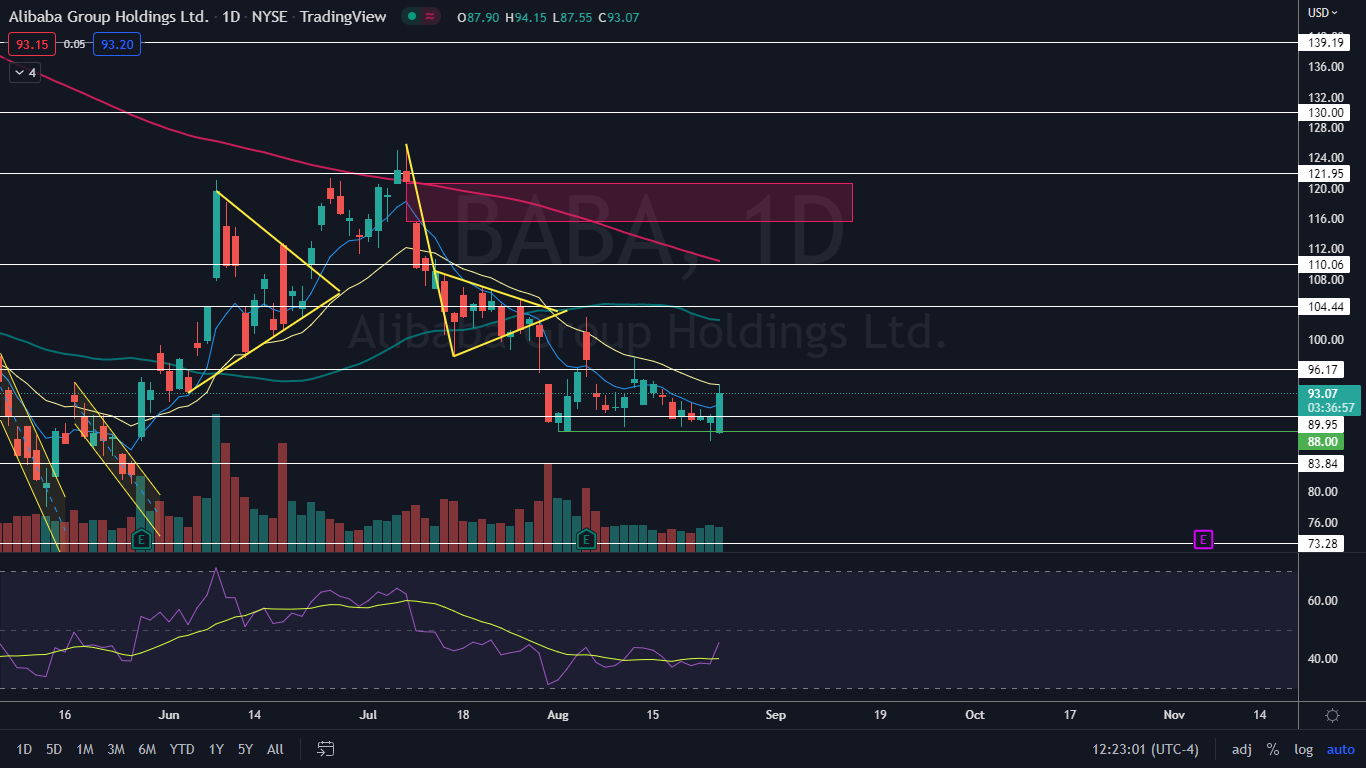
Alibaba Group Holdings, Ltd (NYSE:BABA) opened lower on Wednesday but surged over 7% off the open at one point intraday to trade up about 3.8% off Tuesday's closing price.
The Chinese multinational technology company has found solid support near the $88 mark since Aug. 1, bouncing up from the area on multiple occasions.
The surge higher caused Alibaba to negate its most recent downtrend, which began on July 8, bringing the stock from $125.84 to the $87.55 low on Wednesday. For Alibaba to begin trading in an uptrend, the stock will need to retrace and print a higher low above Wednesday’s low-of-day.
Alibaba’s move higher came on higher-than-average volume, which may give bulls more confidence going forward.
Volume is the total number of shares traded in a security within a specific period of time. It’s a momentum indicator used by technical traders to gage overall interest and sentiment in a stock. Volume is also used as an indicator to confirm a trend or trend change.
When bullish trading volume increases, the share price of the stock usually moves higher. Increasing bearish volume when a stock is in a downtrend usually pushes the price lower. In contrast, lower than average trading volume usually indicates consolidation, which results in the stock trading sideways.
- When a bullish trader has a position in a security, decreasing volume can act as sell signal because it indicates the stock is running out of buyers. When increasing volume eventually comes in to break the stock out of the sideways range, bullish traders may choose to enter a position if the stock begins to move upward.
- A bearish trader in a short position may watch for decreasing bearish volume to indicate the stock is running out of sellers and a reversal may be in the cards. If big bearish volume eventually picks up and breaks the stock down from a consolidation pattern, bearish traders may choose to enter into a short position.
Want direct analysis? Find me in the BZ Pro lounge! Click here for a free trial.
The Alibaba Chart: At the time of writing, Alibaba’s volume was measuring in at about 16.3 million compared to the 10-day average of 15.28 million. The stock’s daily trading volume has been increasing since Aug. 16, which indicates bullish momentum may be returning to Alibaba.
- Alibaba’s relative strength index (RSI) also shows signs of bullish momentum. Since July 29, the stock’s RSI has been making a series of higher lows while Alibaba has been making a series of lower lows in its downtrend.
- If Alibaba closes the trading session near its high-of-day price, the stock will print a bullish Marubozu candlestick, which could indicate higher prices will come again on Thursday. If the stock closes the trading session with a long upper wick, it may indicate lower prices are in the cards.
- On Wednesday, Alibaba was running into resistance at the 21-day exponential moving average (EMA). If the stock is able to regain the area as support and trade above the 21-day for a period of time, the eight-day EMA will eventually cross above the 21-day, which would be bullish.
- Alibaba has resistance above at $96.17 and $104.44 and support below at $89.95 and $83.84.

Photo via Shutterstock.







